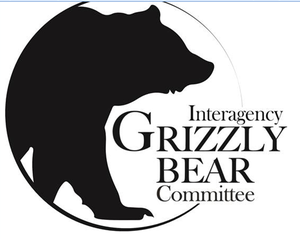Yellowstone grizzly bear delisting supported by wildlife professionals
ENDANGERED SPECIES -- The Interagency Grizzly Bear Committee says it supports a federal proposal to remove Yellowstone-region grizzly bears from Endangered Species protections, a goal wildlife professionals have been working toward for decades.
Make no mistake: the chorus criticizing last week's U.S. Fish and Wildlife Service proposal to delist the bears is focused on the possibility that limited hunting could be allowed for the bears if management authority is turned over to the states.
But as the bears have recovered, conflicts between humans and grizzly bears have been on the rise, including six people fatally mauled since 2010. A record 59 bears were killed by humans last year, often by wildlife managers following attacks on livestock.
A few bears harvested each year by hunters paying a premium for permits and likely hiring local outfitters could help create an economic benefit while helping reduce bear conflicts. Currently, lethal action necessary to control problem grizzlies is simply a waste.
But that's my take. The professionals involved in the Interagency Grizzly Bear Committee look at grizzly bear recovery as a success story. Here's the committee's statement:
The Interagency Grizzly Bear Committee (IGBC) is encouraged by the announcement by the United States Fish & Wildlife Service that it is beginning the final step in the process to delist the Yellowstone Ecosystem grizzly bear population. According to IGBC Chair and Director of the Washington Department of Fish & Wildlife James Unsworth, “It has only been through decades of committed scientific management by IGBC member agencies that the Yellowstone grizzly population has met and exceeded all biological goals set forth in the recovery plan. The goal of the Endangered Species Act is to bring populations back to the point that the states can resume control. In the case of the Yellowstone grizzly we have met that goal.”
The IGBC would like to encourage the public to review and comment on the documents that have been created through collaborative efforts of local, state, federal, and tribal resource managers.
The Interagency Grizzly Bear Committee was formed in 1983 to help ensure recovery of viable grizzly bear populations and their habitat in the lower 48 states through interagency coordination of policy, planning, management, and research.
The IGBC consists of representatives from the U.S. Forest Service, the National Park Service, the U.S. Fish and Wildlife Service, the Bureau of Land Management, the U.S. Geological Survey and representatives of the state wildlife agencies of Idaho, Montana, Washington and Wyoming. In the interest of international coordination and cooperation, the Canadian Wildlife Service is also represented. At the ecosystem level Native American tribes possessing grizzly habitat within the recovery areas have also been involved.

